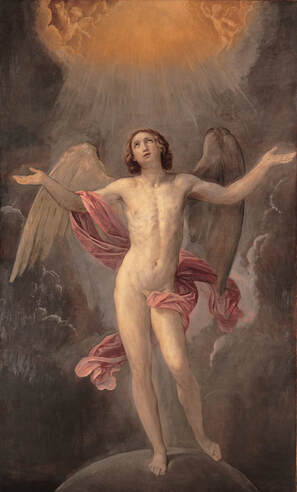|
Towards the end of the second day of Fonte’s Worth of Women, she defends the beauty of the mind and spirit as superior to the beauty of the body:
Although Fonte ultimately concludes that the mind and spirit are superior to the body in quality and beauty, she does not deny the merit of a beautiful body and begins by highlighting the benefits of our corporeal form. The value of the body, according to Fonte, comes from its power to inspire an initial “love” and “desire” for one another. When we meet another person, the appearance of their body “is the first to present itself to our eye and our understanding.” Given our limited perspective, we are directed by our physical desires in our first evaluation of potential lovers. Fonte acknowledges the great influence of a beautiful appearance as she writes, “You’re quite right when you say that in the short term what we see and what pleases the eye has far more power over us than what we cannot see or grasp in an instant” (207). The power of the corporal form to attract, according to Fonte, is greater than the power of the invisible mind and spirit. Yet, this same power leads lovers to desire a fragile, mortal, and inferior kind of beauty.
Unlike the body, Fonte argues, the mind and spirit are truly worthy of our love. Not only do the mind and spirit “[reside] in a nobler part of us,” their very quality exceeds that of our corporeal form. The beauty of the mind and spirit, Fonte argues, “are the kind of beauties that do not fade or wither, but last our whole lives and even live on after our deaths, in our fame” (207). Their ability to withstand the costs of time make the mind and spirit superior to “corporeal beauty” which is “like a fragile flower…fall wilted and dry to the earth.” While the body always falls subject to “illness…fatigue or gradual aging,” inevitably losing its beauty, the beauty of the mind and spirit persists in the face of adversity and escapes the ugly consequences. The superiority of the mind and spirit, then, comes from their infinite beauty which cannot be damaged or lost. Most interestingly, Fonte highlights the moral dimension of the mind and spirit. She describes their beauty as “virtue in its various forms” with “glories” that even the poets cannot capture. In this way, the mind and spirit have an innate and “divine” worth in their nature. Fonte also argues that the mind and spirit “belong” to us in a way our bodies do not. While our bodies change and lose their beauty as we age or fall ill, the beauty of our mind and spirit “inalienably belongs to us”. For being impervious to change and having a moral nature, the mind and spirit are of “a nobler quality” in comparison to the body. It is important to note that the mind and spirit are not entirely separate from the body in love. The value of the body exists within its power to ignite a carnal attraction in the mind. However, overall, the body’s vulnerability and volatility makes it inferior to the impenetrable mind and spirit. For these reasons, Fonte concludes that the lover who desires their beloved for their bodily attributes ignores “what is more important in us and more worthy” of being a reason for love: the beautiful, superior, and “immortal” spirit and mind. --MP Text source: The Worth of Women: Wherein Is Clearly Revealed Their Nobility and Superiority to Men. Edited and Translated by Virginia Cox, The University of Chicago Press, 1997. Image info: Blessed Soul, illustrated by Guido Reni, Italian, published between 1640 and 1642 https://artvee.com/dl/blessed-soul
0 Comments
Leave a Reply. |
Authors
Jacinta Shrimpton is a PhD student in Philosophy at the University of Sydney. She is co-producer of the ENN New Voices podcast Archives
May 2024
Categories
All
|

 RSS Feed
RSS Feed